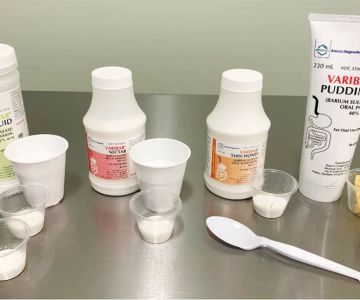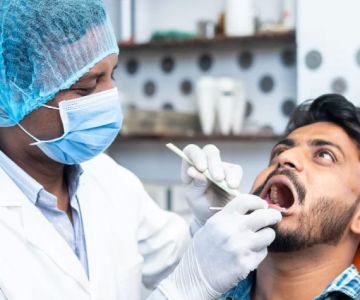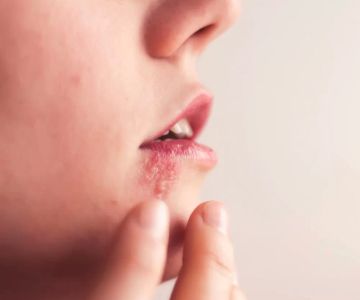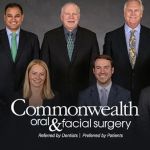How Reliable Are Dentist Checks for Oral Cancer?
Dentist checks for oral cancer play a crucial role in the early detection of this potentially life-threatening disease. Oral cancer screening during routine dental exams is designed to identify abnormal tissue changes or lesions in the mouth that could indicate cancer or precancerous conditions. But how valid and accurate are these checks, and can patients rely on them to catch oral cancer early?
In the United States, dentists are often the first healthcare professionals to spot oral cancer signs, as many cases are diagnosed during dental visits. These screenings typically involve a visual and tactile examination of the mouth, throat, tongue, and lips, combined with a review of the patient's medical and lifestyle risk factors.
1. Methods Dentists Use for Oral Cancer Screening
Dentists conduct oral cancer checks using several methods to improve accuracy:
Visual Examination: Dentists carefully inspect all oral tissues for unusual patches, ulcers, or lumps. Changes in color or texture may be early warning signs.
Palpation: Feeling for lumps or abnormalities beneath the surface can reveal hidden issues.
Adjunctive Tools: Some dentists use specialized devices like VELscope or brush biopsies to enhance detection of suspicious areas that are not visible to the naked eye.
While these methods are generally effective, no screening test is perfect. False positives or negatives can occur, which is why follow-up diagnostics like biopsies may be necessary to confirm a diagnosis.
2. Accuracy and Limitations of Dentist Oral Cancer Checks
Studies indicate that routine oral cancer screenings by dentists have a high validity rate when performed properly, especially when combined with patient history and risk assessment. Early-stage cancers are more likely to be detected during regular dental visits, significantly improving treatment outcomes.
However, challenges exist. Some precancerous lesions can be subtle and easily overlooked, and the skill and experience of the dentist play a vital role in detection accuracy. Additionally, not all dental practices use adjunctive diagnostic tools, which can limit screening sensitivity.
Patients with high risk factors—such as tobacco use, heavy alcohol consumption, HPV infection, or a family history of cancer—should inform their dentist to ensure thorough screening tailored to their needs.
3. Real-Life Impact: Stories Emphasizing the Importance of Dentist Screenings
Consider the story of Mark, a 52-year-old from Florida, who had no symptoms but during a routine dental exam, his dentist noticed a small white patch on his tongue. Further testing confirmed early-stage oral cancer. Because of timely detection, Mark received treatment early and is now cancer-free.
Another example is Lisa, a 38-year-old non-smoker with HPV-related risk. Her dentist used a fluorescence-based device to identify suspicious tissue invisible to the naked eye. This early discovery allowed Lisa to seek treatment before the condition progressed.
These stories highlight the life-saving potential of regular dental oral cancer checks and why they should be an integral part of preventive healthcare.
How Patients Can Maximize the Effectiveness of Oral Cancer Screenings
To get the most valid and thorough oral cancer screenings, patients should:
1. Schedule Regular Dental Visits: Consistent exams increase chances of early detection.
2. Share Complete Medical and Lifestyle Information: Transparency helps dentists assess risks accurately.
3. Ask Questions: Understanding the screening process and results builds confidence and awareness.
4. Seek Second Opinions if Unsure: Additional evaluations can clarify ambiguous findings.
Taking an active role in oral health empowers patients and improves screening validity.
Professional Resources for Oral Cancer Screening
For those seeking expert oral cancer screening services, Dentistry Toothtruth offers comprehensive examinations performed by skilled dental professionals using the latest diagnostic tools. Their commitment to patient education and early detection ensures high-quality care tailored to individual risk factors.
Visiting trusted providers and maintaining open communication about concerns enhances the reliability of oral cancer checks and supports overall health.







 Commonwealth Oral & Facial Surgery Brandermill4.0 (57 review)
Commonwealth Oral & Facial Surgery Brandermill4.0 (57 review) Mint Dental4.0 (308 review)
Mint Dental4.0 (308 review) Kenton Johnson, DDS5.0 (5 review)
Kenton Johnson, DDS5.0 (5 review) Cindy Kirby, DDS4.0 (63 review)
Cindy Kirby, DDS4.0 (63 review) Valleywise Community Health Center - Avondale4.0 (343 review)
Valleywise Community Health Center - Avondale4.0 (343 review) Guiffre Mears & Powell5.0 (5 review)
Guiffre Mears & Powell5.0 (5 review) The Importance of Oral Health Education During Pregnancy for a Healthy Pregnancy
The Importance of Oral Health Education During Pregnancy for a Healthy Pregnancy Best Tips for Brushing Your Teeth Properly for Healthy Gums: Essential Techniques for Oral Health
Best Tips for Brushing Your Teeth Properly for Healthy Gums: Essential Techniques for Oral Health Why Skipping Dental Checkups Can Lead to Bigger Oral Health Problems
Why Skipping Dental Checkups Can Lead to Bigger Oral Health Problems Advantages of Porcelain Dental Restorations
Advantages of Porcelain Dental Restorations How Can Diabetes Cause Tooth and Gum Problems? Preventing and Managing Oral Health Issues
How Can Diabetes Cause Tooth and Gum Problems? Preventing and Managing Oral Health Issues Healthy Habits for Promoting Good Oral Health and Hygiene: Tips for a Healthy Smile
Healthy Habits for Promoting Good Oral Health and Hygiene: Tips for a Healthy Smile